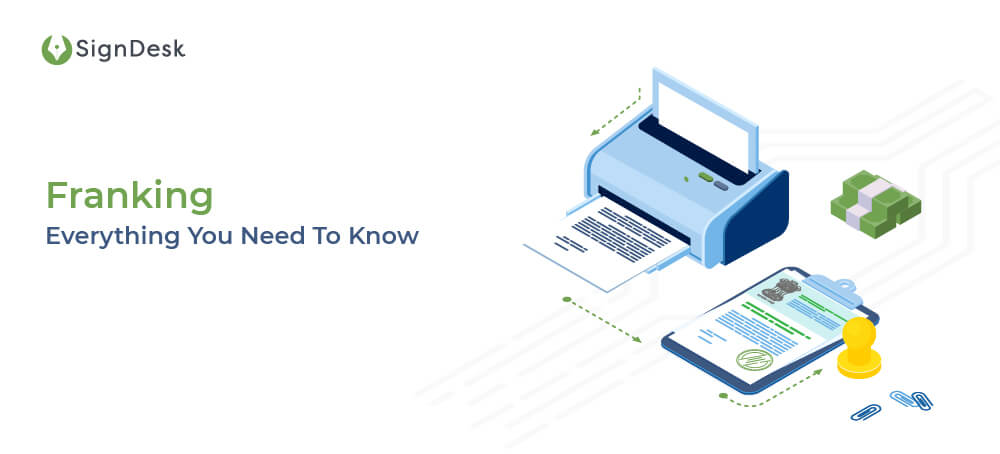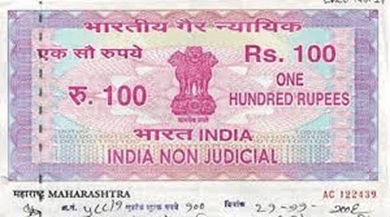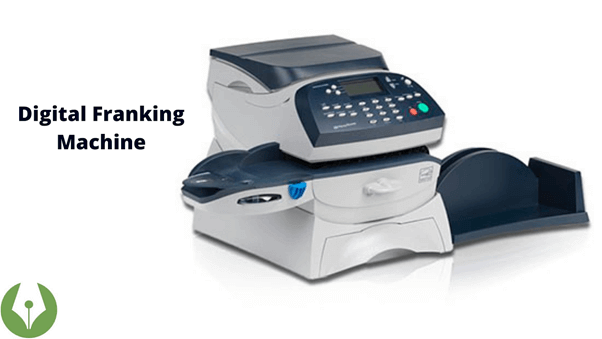What is Franking?
When purchasing a property, taking a loan, or creating any legal documents, a customer must pay a set of processing fees. These charges involve registration fees, franking charges and stamp duty, all of which are required to be paid in certain cases & to different authorities.
Franking is widely misunderstood & often confused with stamping; clarification among the two is vital while dealing with legal documents.
State Governments levy stamp duty, a transactional tax levied on documents to make them legally valid. It is one of the most significant sources of income to fund government activities.
There are different modes of stamp duty payment, but franking and eStamp online are the popular ones. This article focuses on franking, which is one of the modes.
So, frankly speaking, what is franking?

Franking Meaning
The term franking originates from the French word affranchir, which means ‘free’. The British House of Commons in 1660 claimed the privilege with a demand for free carriage of letters addressed to or sent by the members. This was in return for establishing a post office.
Today, franking documents is a mode of stamp duty where an authorised bank or an agent franks the documents using an automated franking machine. The machine impresses a red mark or a particular denomination on the document. The impressed document acts as proof that the customer has paid the required stamp duty.
In simple words, franking is the process of stamping the documents/instruments, indicating that they are legal and that clients paid the stamp duty.

Franked document
Before the emergence of franking, the payment of stamp duty was confirmed using stamp papers But they were vulnerable to misuse, tampering, and forgery, which led to a lot of scams. Hence, the government discontinued the practice and introduced franking machines.
The state government buys and standardises the franking machines in most cases. They then provide them to banks or authorized agents.
Anyone desirous of becoming authorized to use franking machines must submit a franking license application to a state government branch (usually a superintendent of stamps or post office) and obtain the official permission/license from them.

But what incentivizes private individuals or banks to obtain licenses for franking? The answer is that banks & authorized franking agents can levy a franking charge to frank documents.
Franking Charges
Franking charges are processing or operating fees that entities with franking licenses or authorized franking entities levy for using franking machines. This means that the customer has to pay a small franking charge every time a document is franked.
Franking charges vary with states. In Karnataka, the charges are 0.1% of the total stamp duty paid, and in other states like Maharashtra, it’s 3% of the total purchase. In all cases, the customer has to pay the franking charges to the authorized franking agent or bank.
An example of the franking charge calculation – If a customer has bought a property for 20 lakhs in Karnataka, the franking charges would be Rs 2000. Franking charges are a part of stamp duty. Suppose, in Karnataka, if the stamp duty is 8%, the customer has to pay 7.9% as stamp duty, and the rest as franking charges, which is 0.1% of 8%.
Franking charges apply to loan agreements as well. For this, the percentage of changes varies.
As per the GST Act 2017, GST is not applicable for judicial papers, even those sold by the government authorities or an authorized vendor. Hence franking charges are free of GST. Similarly, it is exempt from TDS (Tax Deduction at Source).
Franking Charges vs. Stamp Duty – the Difference
There is a lot of confusion revolving around the terms franking charges and stamp duty. The main difference is that stamp duty is a tax levied on documents by the government. In contrast, the franking charge is a small amount paid to the franking authority for stamping the documents. The franking process is subsequent to stamp duty payment on the document.
The amount for stamp duty varies for different states. Within a state, the percentage varies with urban & rural regions and genders as well. Similarly, franking charges also vary between states – franking charges are just 0.1% of the transaction value in Karnataka. Franked documents look like non-judicial eStamp paper, in some cases.
In the context of agencies, for traditional stamping, stamp duty is usually paid to the stamp paper vendor while purchasing stamp papers, at the sub-registrar’s office, or online in real-time in case of eStamping.
On the other hand, franking charges are paid at authorized franking agencies/banks. Only selected banks or agents who have the Government’s permission can add the franking stamp on the documents.
To summarise the differences –
|
STAMPING |
FRANKING |
|
Tax levied by the government on legal documents & agreements |
It is simply stamping a legal document and/or impressing a certain denomination using a franking machine |
|
Mandatory charge for all legal documents |
One of the modes of paying stamp duty |
|
Paid at the sub-registrar’s office |
Paid at the authorised banks/agents |
|
Authorised websites pays for eStamping online |
eStamp paper is previously franked |
| Stamp duty charges vary between 4-10% depending on the states |
Franking charges are lesser than stamp duty and can vary between 0.1% – 3% depending on the states |
When to Frank Documents
The customer must type all the information and details on plain paper and get the document franked before signing it. They need to fill an application form with all the franking details and then approach the franking authority.
Banks receive a limited quota for franking, and they cannot frank any more documents beyond that. Customers must visit the authorized bank during a specific time or approach an agency to get their documents franked.
Is Franking Better Than Other Modes of Stamp Duty Payment?
If a customer is paying with cash or Demand Draft (DD), they can pay the franking charges quickly. However, franking rules vary across states and are not uniform. It is advisable to use franking only if the customer is paying with cash.
The customer can also purchase printed stamp papers or buy eStamp paper online, which are previously franked. The cost of the stamp papers includes stamp duty, so the customer has to just register and sign them. However, this is only useful in certain situations.
A drawback with franking is that each bank has a limited quota. If a customer requires a denomination that exceeds the bank’s quota, they have to inform the bank beforehand to conclude the transaction.
Stamp duty payment does not happen in real-time and requires the customer to visit the bank physically. It’s difficult to get multiple documents franked, due to the limited quota allotted, risking the loss of documents and fraud.
Other modes of stamp duty may have some disadvantages. In the case of pre-embossed stamp paper, the customer must purchase them from an authorized vendor only, and there is no way for an ordinary person to authenticate the vendor and the stamp paper. Also, a pre-embossed stamp paper is hard to get for all denominations.
An alternative to franking is e-stamping, a process where the customer pays stamp duty online in real-time and SHCIL (Stock Holding Corporation of India Limited), keeps all the records for stamp duty payment. SHCIL is the central record-keeping agency for all stamp duty transactions.
How does franking compare with eStamping?
Franking Vs eStamping – What’s the Better Alternative?
e-stamp is more secure and tamper-proof than any other mode of stamp duty payment. Only authorized banks can generate e-stamp paper online, an ordinary citizen is not allowed to generate it by themselves. Customers can easily transact online through net banking or they can use a bank challan.
Physical stamp and manual stamp duty payments are not always convenient. They are a slow process and result in enormous TAT. Digital stamping is an alternative solution with more benefits and convenience.
The eStamping process involves uploading the document to be stamped using a digital stamping solution, selecting the amount, denomination, state, and other details for the stamp papers, paying stamp duty, and downloading the stamped document.
Here’s how eStamping measures up against franking.
| eStamping |
Franking |
|
|
Real-time stamp duty payment |
✔️ |
❌ Stamp duty paid physically |
|
Stamp unlimited documents |
✔️ |
❌ Quota on number of franked documents |
|
Digitized documents |
✔️ | ❌
Usage of paper documents that can be lost or misplaced |
| Remote & digital stamping | ✔️ |
❌ Must be physically present at a bank or agency |
|
Secure stamp duty payment |
✔️ |
❌ High risk of fraud |
Here are the steps to pay stamp duty online –
- Log in to a secure estamping website.
- Deposit an advance stamp duty amount
- Select ‘state’, details of the first (and second party if any), article number, denomination, stamp duty amount & other details
- Upload the document to e-stamp it
- Download the stamped document
Clients can complete these steps in less than ten minutes with a trusted digital stamping service.
SignDesk’s Digital Stamping Solutions
Digital stamping is an automated alternative to franking or paying stamp duty physically. Digital stamping boosts efficiency, digitizes and optimizes documentation workflows, and allows businesses to register documents online in bulk.
SignDesk e-stamping solution – stamp.it is an award-winning digital stamping solution, used by 50+ major Indian banks to pay stamp duty online & nearly 85% of all businesses in our target space. Our clients have experienced a massive reduction in TAT by nearly 99% with our digital stamping solution.
Our solution seamlessly integrates with CLM software and includes a form builder for creating and customizing digital documents efficiently. This also offers document tracking, API integrations, inventory management, and is backed by the best legal experts. Book a demo now to start paying stamp duty online with SignDesk’s digital stamping product.